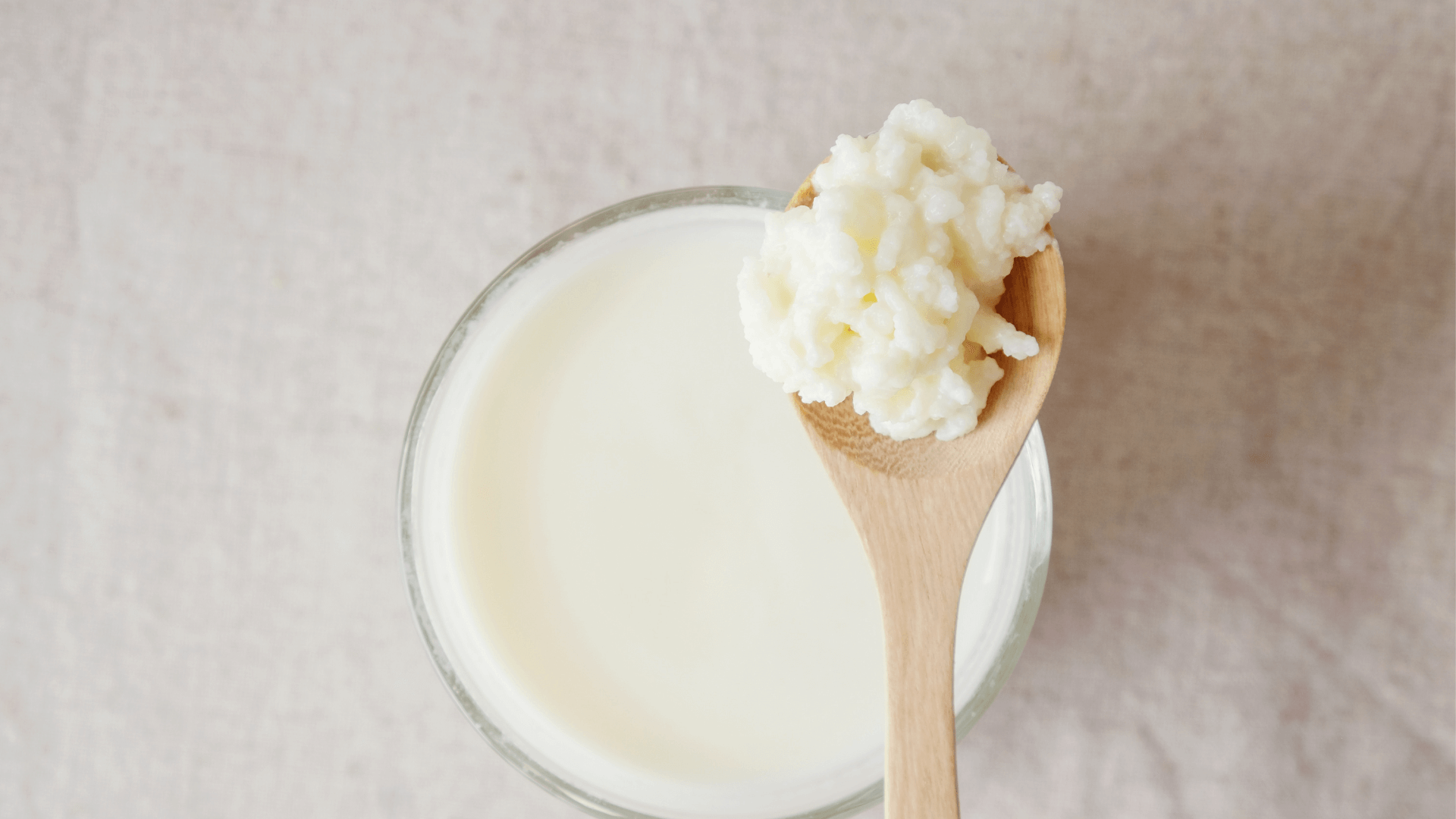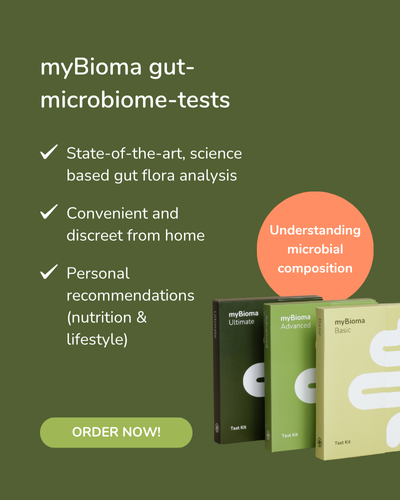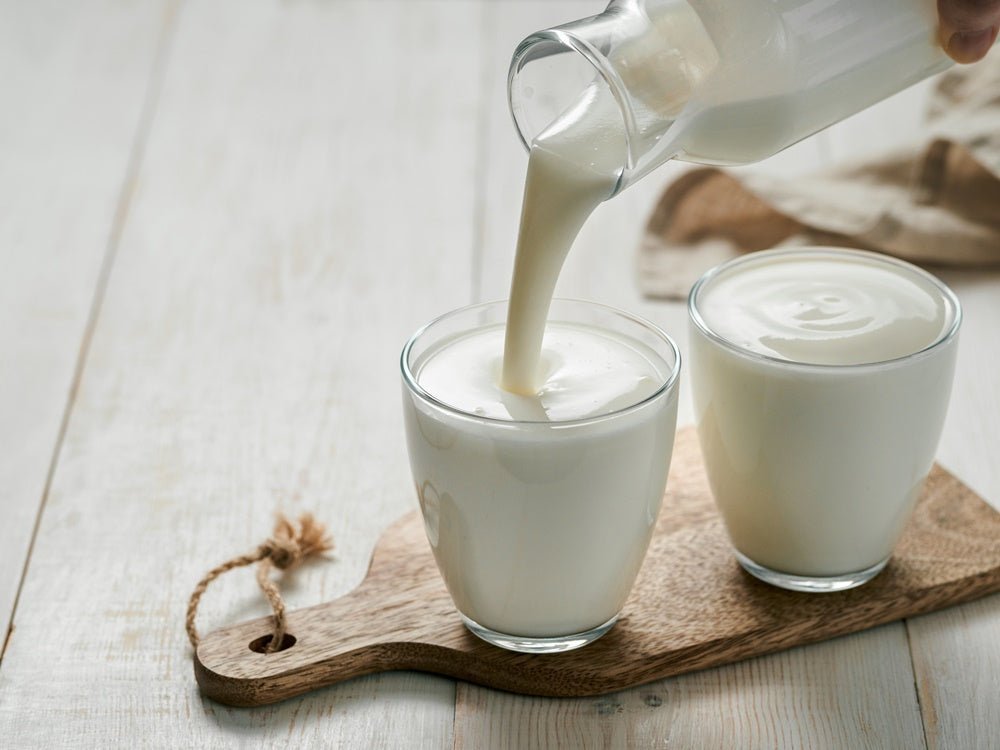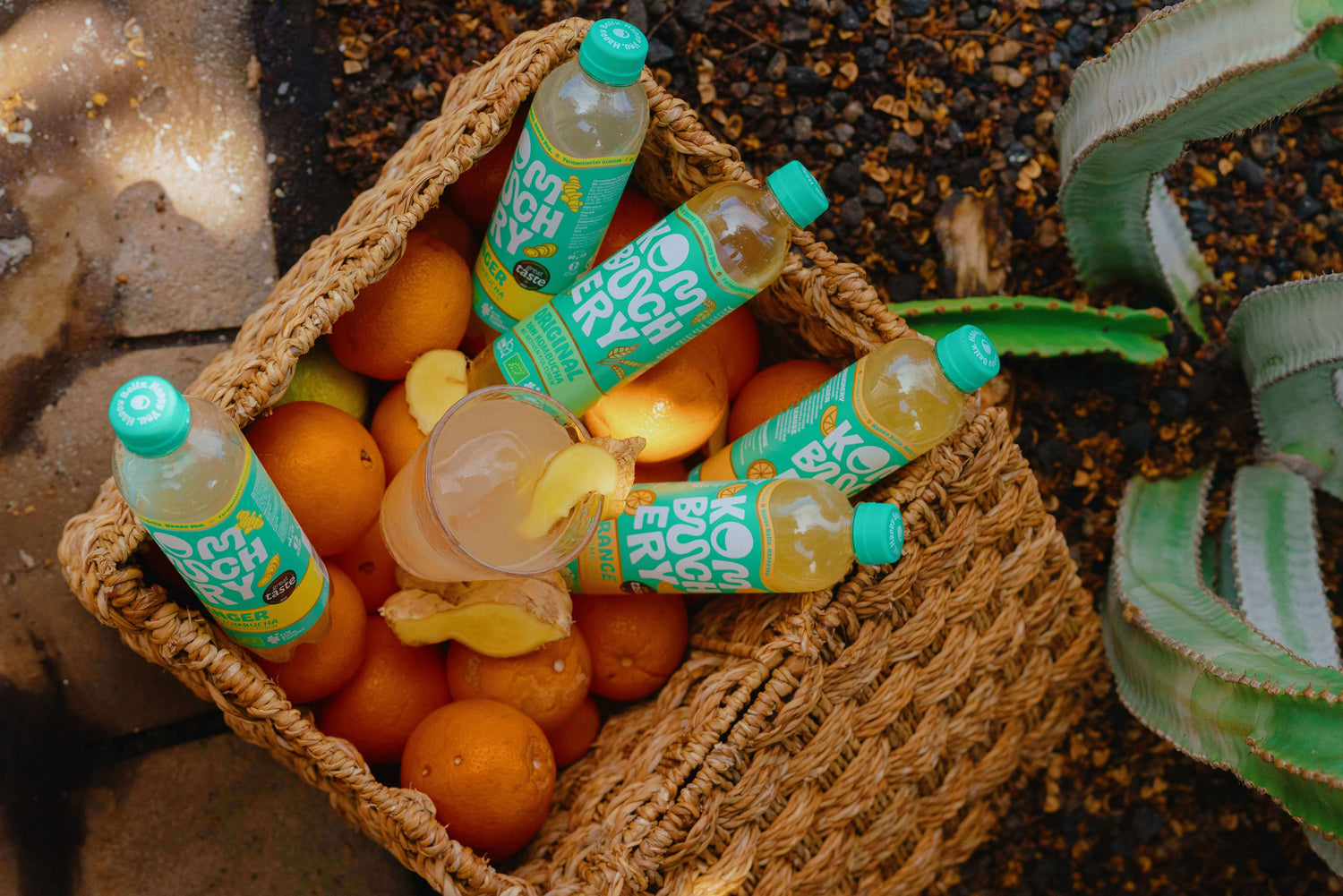Table of contents
- What is kefir and what are the health benefits of the milk drink?
- Which bacteria are found in kefir?
- What are the differences in the production of kefir?
- Raw milk kefir: Kefir with raw milk
- Instructions: How to make kefir with raw milk
- Where to buy kefir tubers?
- How can you use kefir?
- Is it healthy to drink kefir every day?
- Who should not drink kefir?
- When should you drink kefir?
- How healthy is kefir from the supermarket and which kefir is the best?
- Which is healthier: kefir, yoghurt or buttermilk?
- A summer recipe with kefir
Kefir (milk kefir) is a probiotic drink produced by the fermentation of milk by lactic acid bacteria and yeasts. The consumption of kefir can have a very positive effect on intestinal health due to the probiotic bacteria it contains, strengthening the immune system, counteracting inflammation, promoting good digestion and also inhibiting the growth of pathogens in the intestine. Kefir also contains valuable amino acids, vitamins and minerals, including B vitamins, vitamin C, magnesium and calcium (1).
In this article you will find all the information you need to know about kefir and we will show you how to make it yourself at home. We explain the health benefits of kefir, what you should bear in mind when consuming it and who can benefit from it. Of course, we also have a summery recipe with kefir for you at the end.
What is kefir and what are the health benefits of the milk drink?
Kefir is a fermented milk drink that has been around for centuries. The word kefir comes from the Turkish word "keyif", which means "good feeling". Kefir is made by adding kefir tubers to milk and letting them ferment for 24-48 hours. Kefir nodules are a symbiotic culture of bacteria and yeast that look like small white balls and are also called "SCOBY" (symbiotic culture of bacteria and yeasts). The nodules contain up to 120 strains of lactobacilli (2).
When kefir ferments, the bacteria and yeasts in the kefir grains eat most of the lactose in the milk, making it easier to digest for people with lactose intolerance (3).
But what exactly does kefir do to the body?
Kefir is rich in probiotic bacteria, which are good for your gut health. The health-promoting bacteria in kefir displace unwanted microbes in the gut. Lactobacilli have also been shown to improve digestion, support the immune system and reduce inflammation in the gut (3).
Can Kefir Help with Irritable Bowel Syndrome or Candida?
Kefir may be beneficial for both irritable bowel syndrome (IBS) and Candida overgrowth. Thanks to its wide variety of probiotic bacteria and yeasts, kefir supports the restoration of a healthy gut microbiome, which plays a key role in managing both conditions. The probiotics it contains can help reduce intestinal inflammation, support digestion, and inhibit the growth of harmful yeasts such as Candida. Kefir has also been shown to have positive effects on bowel function: studies suggest that the probiotics in kefir can improve stool consistency and increase bowel movement frequency – a significant benefit for many people with irritable bowel syndrome who often suffer from constipation.
Due to the fermentation process, kefir contains less lactose than regular dairy products and is therefore generally better tolerated – particularly by individuals with lactose intolerance, which is common in people with irritable bowel syndrome. However, some individuals may be sensitive to the probiotics in kefir, which can lead to bloating or discomfort. For this reason, it is advisable to start slowly, gradually increasing the amount consumed while monitoring individual tolerance. Whether kefir is well tolerated varies from person to person and depends greatly on the individual's body (4).
Which bacteria are found in kefir?
The microbial community of kefir comprises a complex mixture of lactic acid bacteria (Leuconostoc, Lactobacillus, Streptococcus, Lactococcus, Enterobacter, Acinetobacter, Enterococcus and Pseudomonas spp.), acetic acid bacteria and yeasts (Kluyveromyces, Candida, Saccharomyces, Rhodotorula and Zygosaccha-romyces) (5).
Studies based on the sequencing of 16S ribosomal RNA genes in kefir grains and milk have shown that kefir grains typically have one (Lactobacillus) or two (Lactobacillus and Acetobacter) dominant bacterial genera. The most common Lactobacillus species are L. kefiranofaciens, L. kefiri and L. parakefiri (6).
In addition, yeasts play an important role in creating an environment that allows kefir bacteria to grow. The yeasts also produce various metabolic products such as peptides, amino acids, vitamins, ethanol and CO2, which contribute to the taste and flavour of kefir (7).
What are the differences in the production of kefir?
There are several ways to make kefir. The most common, as already mentioned, is to put the kefir grains in milk and let it ferment for 24-48 hours. But you can also make water kefir by putting the grains in sugar water and letting it ferment for 24-48 hours. Water kefir is a refreshing, dairy-free alternative to milk kefir.
You can also make fruit kefir by adding the grains to juice or pureed fruit and fermenting for 24-48 hours. Fruit kefir is a good way to supplement your diet with probiotics if you are vegan or lactose intolerant.

You can easily make kefir at home with a few simple ingredients.
You can easily make kefir at home with a few simple ingredients. All you need is milk and kefir balls. You can use any kind of milk, but whole or fresh milk will give you the best taste. You can also use raw milk to get even more probitic bacteria in your kefir.
To make the kefir, simply add the tubers to the milk and let them ferment for 24-48 hours at room temperature. The longer you leave the kefir, the more tart and sour it will taste. Once the kefir is ready, strain the grains and enjoy your homemade kefir.
Raw milk kefir: Kefir with raw milk
If you can find raw milk, kefir made from raw milk is a healthy option with even more probiotic bacteria. Raw milk kefirs are richer and creamier than regular kefirs. They also contain more probiotics because the fermentation process is slower.
Instructions: How to make kefir with raw milk
- 1 litre milk of your choice (room temperature is best)
- 3 tablespoons kefir tubers
- a clean glass jar
- a sieve
- a cheesecloth
Preparation: Here's how to make kefir
Pour the milk into the glass jar and add the kefir grains. Stir well and cover the jar with a cheesecloth. Alternatively, you can also lightly cover it with a blanket. Leave the milk with the kefir grains at room temperature for about 24 hours.
After 24 hours, strain the kefir through a sieve lined with cheesecloth into another glass jar. Cover it and put it in the refrigerator. The kefir will keep in the fridge for up to two weeks.
Where to buy kefir tubers?
You can buy kefir tubers online or in some health food shops. However, it's best to buy them from a trusted source, such as a friend or family member who has made kefir before. That way you can be sure you're getting high quality grains that you can use to make delicious and healthy kefir!
How can you use kefir?
Kefir can be used in many ways. You can drink it pure or add it to smoothies, yoghurt or porridge. By the way, kefir can also be used as a skin care product.
Is it healthy to drink kefir every day?
Regular consumption of kefir has positive effects on health. Kefir can also be consumed daily. (8) For the most varied diet possible, it makes sense not only to consume kefir as a probiotic food, but also to alternate it with other fermented foods such as sauerkraut, kimchi, yoghurt and kombucha. This ensures a higher diversity of ingested probiotic microorganisms.
Who should not drink kefir?
If you are lactose intolerant, you should not drink milk kefir. This is because the fermentation process does not completely break down the lactose in the milk. However, some people with lactose intolerance can tolerate small amounts of kefir. If you are unsure whether or not you can drink kefir, it is best to consult a doctor or other therapist.
Water kefir and fruit kefir, on the other hand, are a good alternative for people with lactose intolerance.
Is Kefir Suitable for People with Histamine Intolerance?
Due to its short fermentation process, kefir generally contains only low levels of histamine. It may therefore be tolerated by individuals with histamine intolerance, especially when consumed in its pure form without added fruits or additives. However, since individual reactions can vary greatly, it is advisable to start with small amounts to assess personal tolerance. Products containing fruit – particularly citrus fruits, berries, or bananas – should be avoided, as they may either be high in histamine themselves or trigger histamine release in the body (9).
When should you drink kefir?
Kefir can be drunk at any time of the day. However, it is best to drink kefir in the morning or afternoon because it is a probiotic-rich food and you want to give your gut bacteria a chance to do their job.
How healthy is kefir from the supermarket and which kefir is the best?
Kefir from the supermarket also contains probiotic bacteria, vitamins and minerals and is beneficial to health. However, not all kefirs are the same. The industrial production of kefir using selected cultures often results in a lower variety of probiotic bacteria and yeasts. In addition, kefir from the supermarket is usually heavily pasteurised and therefore contains fewer nutrients. You can recognise it by the label "Kefir mild". To maximise the benefits for your intestinal flora, you should therefore make your own kefir (1), (10).
Some kefirs are also made with fruit juice or pureed fruit. These kefirs usually contain less fat and calories than milk kefirs. However, they also contain less protein and calcium.
Want to be the first to hear about product news, get exclusive discounts, recipes and more? Join our HAPPY GUT CLUB on WhatsApp now: myBioma Happy Gut Club
For you. For your gut.
Which is healthier: kefir, yoghurt or buttermilk?
Kefir, yoghurt and buttermilk all contain probiotic bacteria that can have a positive effect on your health. They also all contain valuable nutrients such as vitamin B12 and calcium, which vary slightly in frequency.
Some studies suggest that the diversity of beneficial microbes is highest in kefir and that kefir has a higher antioxidant effect (11).
However, we believe there is room for all three in a varied diet! You may also have personal preferences or tolerate one of the three particularly well.

Summer Green Kefir Smoothie.
A summer recipe with kefir
For inspiration, we now have a delicious recipe so you can vary your homemade kefir: Summer Green Kefir Smoothie
- Mint
- 1 handful of spinach leaves
- 1 frozen banana
- Juice of half a lime
- 250g kefir
Instructions:
- Put all the ingredients in a blender and puree until smooth.
- If you like, you can sweeten your smoothie with honey.
- Enjoy!
Kefir is a delicious and healthy probiotic-rich food. Try incorporating it into your diet and see for yourself how it affects your gut health.
Get in control of your gut health
Our gut (microbiome) affects our overall health and wellbeing. By checking it regularly, you can find out how your gut health is doing and take steps to maintain or optimise your health. With myBioma , you can test from the comfort of your own home and receive personalised nutritional recommendations for your gut microbiome.
References
- Rosa, D.D. et al. (2017) ‘Milk kefir : nutritional, microbiological and health benefits’, Nutrition Research Reviews, 30(1), pp. 82–96.
- Marth, E. H., Steele, J. L. (2001). Applied Dairy Microbiology. 2nd edn. Marcel Dekker, New York, 317 pp.
- Batt, C. A., Tortorello, M.-L. (2014). Encyclopedia of Food Microbiology. Second Edition, Academic Press, Oxford. 3248 pp
- Randell, T (o.J.). Is Kefir goof for IBS. Ibs clinics - applied nutritional therapy. https://www.ibsclinics.co.uk/is-kefir-good-for-ibs/
- de Oliveira Leite, A. M., Miguel, L., Peixoto, R. S., Rosado, A. S., Silva, J.T., Margaret, V., Paschoalin, F. (2013). Microbiological, technological and therapeutic properties of kefir: A natural probiotic beverage. Brazilian J.Microbiol,, 44, 341–349
- Hamet, M. F., Londero, A., Medrano, M., Vercammen, E., Van Hoorde, K., Garrote, G. L., Huys, G., Vandamme, P., Abraham, A. G. (2013). Application of culture-dependent and culture independent methods for the identification of Lactobacillus kefiranofaciens in microbial consortia present in kefir grains. Food Microbiol., 36, 327–334
- Irigoyen, A., Arana, I., Castiella, M., Torre, P., Ib, F.C. (2005). Microbiological, physicochemical, and sensory characteristics of kefir during storage. Food Chem., 90, 613–620
- Peluzio, M.D.C.G. et al. (2021) ‘Kefir and Intestinal Microbiota Modulation: Implications in Human Health’, Frontiers in Nutrition, 8, p. 638740.
- Goll, R (o.J.): Milch bei Histamin-Intoleranz?. Histaminta - Die Seite zum Thema Histamin-Intoleranz. https://histaminta.de/milch-bei-histamin-intoleranz-mit-milchprodukte-ratgeber/
- Vieira, C.P. et al. (2021) ‘Bioactive Compounds from Kefir and Their Potential Benefits on Health: A Systematic Review and Meta-Analysis’, Oxidative Medicine and Cellular Longevity. Edited by D. Kouretas, 2021, pp. 1–34.
- Baniasadi, M. et al. (2022) ‘Comparative antioxidant potential of kefir and yogurt of bovine and non-bovine origins’, Journal of Food Science and Technology, 59(4), pp. 1307–1316.









